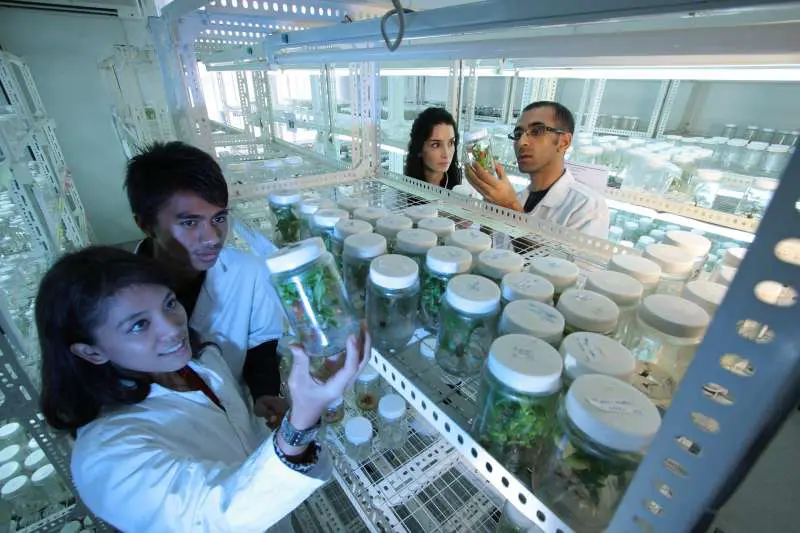[Originally published as the first section of The Ethics of Science: Part 1]
Scientists use a particular method to make new discoveries about how the universe works. They also have a specific process of informing the world of their discoveries. All ethical scientists follow these procedures whether they are Christians or non-Christians. However, the protocols by which scientists conduct and publish research are rooted in the biblical worldview and cannot be justified apart from it. This demonstrates the truth of the Bible. And it also allows us to distinguish genuine scientific research from fraud.
The Scientific Method
It is not a coincidence that most of the founding fathers of the various disciplines of science were Christians. They expected to find patterns in nature because God has imposed order on His creation (Genesis 1:1–31). Such patterns continue to operate in the future as they have in the past because the universe is controlled by God (Hebrews 1:3) who is beyond time (Malachi 3:6; 2 Peter 3:8) and has promised us a certain degree of consistency in nature (Genesis 8:22; Jeremiah 33:25).
Furthermore, we use our sensory organs to probe nature, and these organs were designed by God to truthfully inform us about the external world (Proverbs 20:12). Since humans have been made in the image of God (Genesis 1:26–27), we have the capacity to think rationally — in a way that is consistent with God’s nature (Isaiah 55:7–8; Ephesians 5:1). Thus, when thinking rightly, we can draw correct conclusions from our observations of God’s creation. It is therefore the biblical worldview that justifies our confidence in scientific discovery.
But we don’t always draw correct conclusions from data. We make mistakes in reasoning. And our senses can be fooled at times. The Bible explains why such errors are possible today. We live in a cursed, fallen world (Genesis 3:17–18; Romans 8:20–22). Adam and Eve rebelled against God, and we have inherited their sin nature (Romans 5:12). Sin is rebellion against the God of truth (Job 13:23; John 14:6). Sin therefore leads to error. Sinners suppress the truth in unrighteousness (Romans 1:18). Our fallen sin nature inhibits our ability to discover truth about the universe.
One of our greatest faults is our propensity for self-deception (James 1:22). Due to our fallen nature, we have a tendency to fool ourselves into believing something that is false, particularly when such a thing is desirable. The appeal to consequences is the logical fallacy of believing something because it is desirable, or rejecting something because it is not desirable. Most people believe what they want to believe, even if that belief has no rational justification. But our desires have no effect on reality. How do we avoid the pitfall of drawing conclusions that are merely desirable rather than conclusions that are true?
The scientific method was developed to reduce self-deception and replace it with rational conclusions from observable evidence. The scientific method recognizes both the fallibility of man and the infallibility of God’s Word. It was designed to mitigate human error by replacing it with objective tests that rely upon the fixed patterns God has imposed on nature. Thus, the scientific method presupposes both the faithfulness of God and the fallibility of man.
Science and Induction
Generally, the first step in scientific discovery involves induction. Induction involves inferring a general rule or pattern from observing specific instances. For example, we might observe that when we let go of a pencil, it begins accelerating downward until it impacts a surface. We find that this always happens, no matter what time of day it is, and no matter where we are on earth. There appears to be a general pattern: an unsupported pencil will fall.
In drawing such a (tentative) conclusion, we have relied on the biblical principle of induction. Namely, God has promised that there are certain cycles in nature that will continue in the future as long as the earth remains (Genesis 8:22). When we observe something happen repeatedly, we have good reason to suspect that it might be an instance of one of these patterns that God has imposed on His creation.
Induction is never conclusive. After all, just because a pencil falls in all cases that we have tested, that does not automatically prove it will fall in all cases. Perhaps on the 20,465th test, the pencil does not fall. Since it is likely that no one has tested the claim that many times, we cannot know for sure on our own experience that it won’t happen. Furthermore, all our tests of pencils falling have been in the past (or present). We have not yet observed the result of future tests. So, how can we rationally make any claim about how unsuspended pencils will behave in the future?
For some reason, we just assume that if there is a pattern in the past, that pattern will likely continue in the future. But this is a biblical principle. God is beyond time (Malachi 3:6) and has promised to uphold the future like the past (Genesis 8:22). Therefore, in the Christian worldview, we can use past experience as a basis for what is likely to happen in the future. There is a unifying connection between past and future: God.
But in the secular worldview, there can never be justification for using past experience as a basis for predicting future patterns. The unbeliever does assume that induction works, but he cannot justify it without vicious circular reasoning. After all, in a chance universe, why expect any patterns at all? Nor will it do to say, “In the past, induction has worked. Therefore, in the future it will likely work,” because this assumes induction – the very principle we are attempting to justify! Namely, it is using past experience as a basis for predicting what will likely happen in the future; that’s induction!
If the Bible were not true, then all we could conclude is that unsupported pencils fall in every instance we have so far tried.[1] But the Christian, having observed that unsupported pencils fall in all of the many past instances in which they have been tested, has good reason to suspect that this is one of the patterns God has imposed upon nature. He or she concludes that it will likely continue to happen in the future as well. In fact, the Christian might wonder if this principle also applies to non-pencils. Perhaps all unsupported masses fall. A few preliminary tests with other objects (a baseball, a rock, a quarter, and so on) seem to support this hypothesis.
Experimentation
A hypothesis is an educated guess that is capable of being tested. It is our fallen human nature to simply accept the hypothesis as true without testing. But that would be a mistake. All we have at this point is an educated guess that happens to explain the observations we have so far experienced. But that does not make the hypothesis true. It needs to be tested.
Since God has promised that certain patterns in nature will continue as long as the earth remains (Genesis 8:22), we can discern whether we have discovered such a pattern by repeatedly testing it under a variety of different circumstances. Experimentation relies upon God’s faithfulness in order to discern a genuine pattern from a merely apparent pattern.
For example, suppose we roll a pair of dice and they both come up as fives. We roll them again, and once again both come up as fives. This appears to be a pattern. We might form the hypothesis: “When dice are rolled, they always come up as fives.” But repeating this experiment many times would quickly falsify this hypothesis: eventually the dice would not come up as fives, and this would refute the hypothesis.
In science, an experiment must be capable of disproving the hypothesis. Due to our fallen nature, many people find this counterintuitive. Instead, people tend to propose an experiment that would verify their hypothesis but not one that would disprove it. This error in reasoning is called the confirmation bias. Let’s look at a specific example.
Suppose we have a list of three numbers like 1, 2, and 4. Suppose there is a rule that these numbers follow, and we are tasked with discovering what that rule is. We can list any three numbers and a computer program will tell us if those three numbers follow the rule or not. We try 2, 4, and 8, and find that they do fit the rule. We try 5, 10, and 20, and find that they do fit the rule. After those three examples, many people would think that they have discovered the rule: each number is twice the previous number.
However, they would be wrong. In fact, the rule is simple: “Each number is greater than the previous number.” When people form a preliminary hypothesis, they tend to ask questions that would confirm the hypothesis; this is the confirmation bias at work. But they should instead ask questions that would falsify the hypothesis, questions for which they would expect a negative answer. If anyone had asked whether 1, 5, and 7 fit the pattern (expecting a “no” answer), the “yes” answer would falsify the hypothesis that the pattern is “each number is twice the value of the previous.”
An experiment to test the claim that “all unsupported masses fall” should therefore test many different types of masses in many different circumstances, especially those where we might expect a negative answer. This is sometimes called hypothetico-deductive reasoning. Namely, an experiment that gives a result contrary to the hypothesis will conclusively disprove the hypothesis.
However, an experiment that could give a contrary result but does not is said to corroborate the hypothesis. It does not actually prove the hypothesis because the experiment cannot be performed at all times and in all locations. All it takes is one future negative result to disprove the hypothesis. Thus, scientific experimentation never quite proves a hypothesis with certainty. Nonetheless, as an increasing number of experiments corroborate the hypothesis without exception and contrary to the predictions of competing models, the greater confidence we have that the hypothesis is probably correct.
Suppose in comparing human anatomy with that of a dog and a chicken, we notice that each of these creatures has exactly one heart. We might form the hypothesis: “Every living creature has exactly one heart.” Our temptation would be to test animals similar to humans, dogs, and chickens – such as mammals and birds. This again is the confirmation bias at work. However, what we should do is test a wide variety of animals, including those that are very different from mammals and birds. Testing an octopus would falsify our hypothesis because an octopus has three hearts.







